Are you looking to make changes to your procurement agreement but unsure how to communicate these adjustments effectively? Crafting a clear and concise letter can set the right tone for your discussions and ensure all parties are on the same page. In this article, we'll explore key elements to include in your letter, making sure it conveys your intentions without any misunderstandings. So, grab a seat and let's dive into the essential tips on writing the perfect letter for altering a procurement agreement!
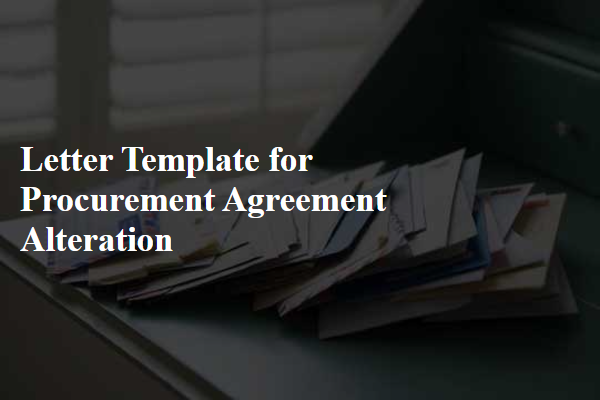
Intent and Purpose of Alteration
The intent and purpose of altering the procurement agreement, specifically for the supply contract with ABC Corporation, dated January 15, 2022, is to reflect changes in pricing, delivery schedules, and updated specifications for the products being procured. The adjustment follows an increase in raw material costs, impacting the agreed-upon pricing structure by approximately 15%. Additionally, modifications to the delivery schedule aim to accommodate the new production timelines, ensuring that the first shipment of goods is delivered by June 30, 2023, rather than the previous date of May 15, 2023. The specifications for the high-performance widgets have been revised to include advanced features aimed at improving functionality and reducing maintenance issues. This alteration seeks to maintain a mutually beneficial relationship and enhance operational efficiency for both parties involved.
Detailed Description of Changes
The procurement agreement alteration involves critical updates that enhance compliance and operational efficiency within the contract framework. Modifications to pricing structures now reflect current market conditions, encompassing adjustments to cost indices and supplier pricing tiers. Delivery schedules have been refined, incorporating specific milestones with deadlines, such as quarterly reviews starting January 2024, to ensure timely fulfillment of orders. Payment terms have been revised to extend net payment periods from 30 to 45 days, allowing for improved cash flow management. Inclusion of quality assurance standards now specifies regulatory adherence to ISO 9001 requirements. Furthermore, the scope of goods and services has been expanded to incorporate environmentally sustainable products, aligning with corporate responsibility goals, and enhancing supplier accountability, especially regarding delivery performance metrics. Lastly, dispute resolution processes have been formalized, introducing mediation as a primary step prior to arbitration, enhancing transparency and reducing potential legal costs.
Effective Date and Duration
The revision of procurement agreements can significantly shape contractual obligations. Effective dates specify when the terms become enforceable, often linked to supply chain logistics or project milestones. Duration indicates the length of time the agreement remains valid. A procurement contract might outline a duration of one year, starting from the effective date, with options for renewal based on performance metrics. It's essential to clearly delineate these parameters to avoid misunderstandings, especially in complex industries like electronics or construction, where project timelines and resource availability are critical.
Consent and Mutual Agreement
A procurement agreement alteration requires careful consideration of the terms outlined in the original contract. Consent must be obtained from all parties involved, ensuring mutual understanding and agreement on the modifications being proposed. This includes clarifying any changes to pricing structures, delivery timelines, and quality standards of the goods or services being procured. Documentation should specify the reasons for the alterations, which could include changing market circumstances, supply chain disruptions, or compliance with new regulatory requirements. Each party's obligations and rights should be clearly stated in the restructured agreement, maintaining transparency and mitigating potential disputes in future transactions. This process not only fortifies the legal standing but also fosters a collaborative partnership built on trust and accountability.
Clause for Dispute Resolution and Legal Compliance
A procurement agreement often includes a dispute resolution clause to outline processes in case of disagreements between parties. Typically, this clause specifies steps such as negotiation, mediation, or arbitration to resolve issues before escalating to litigation. Additionally, the legal compliance clause ensures that both parties adhere to applicable local laws, regulations, and standards throughout the contract's duration, mitigating potential risks. An effective procurement agreement should also reference specific jurisdictions (such as New York or California) where legal proceedings will occur, enhancing clarity on dispute resolution mechanisms. Both clauses are crucial for maintaining a fair and lawful relationship between contracting entities.

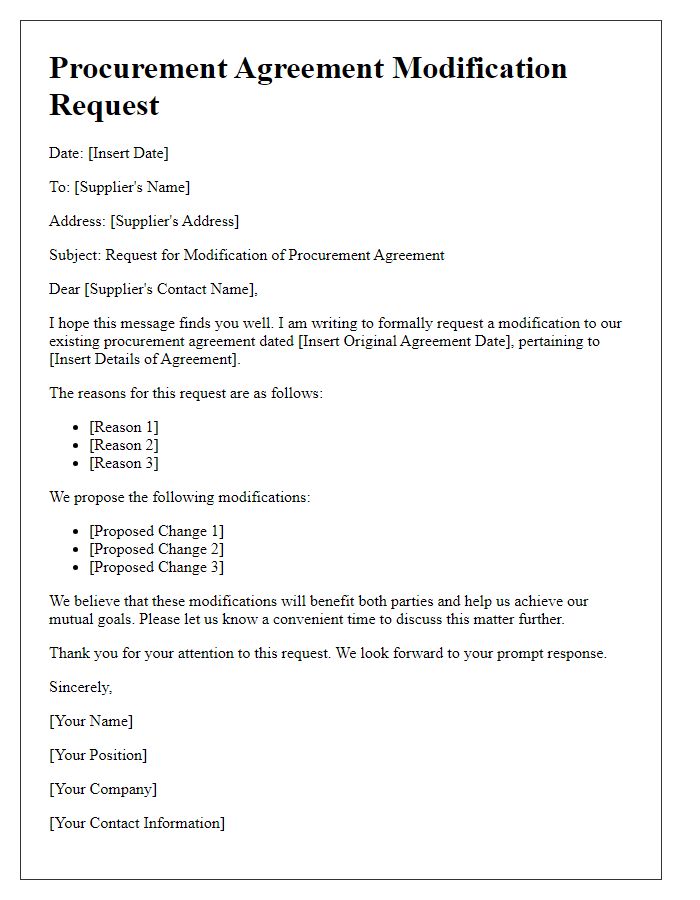
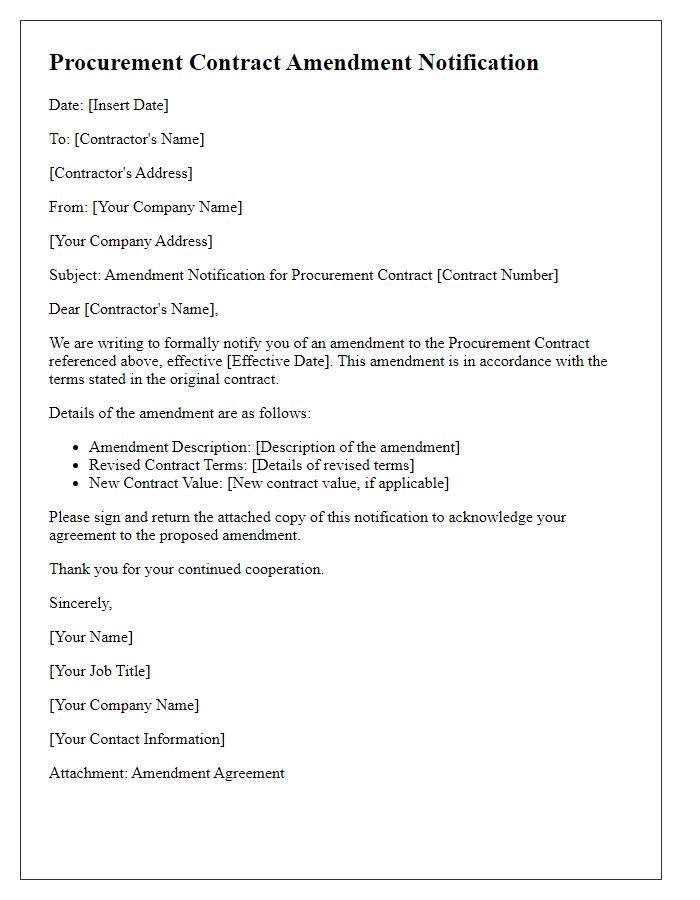
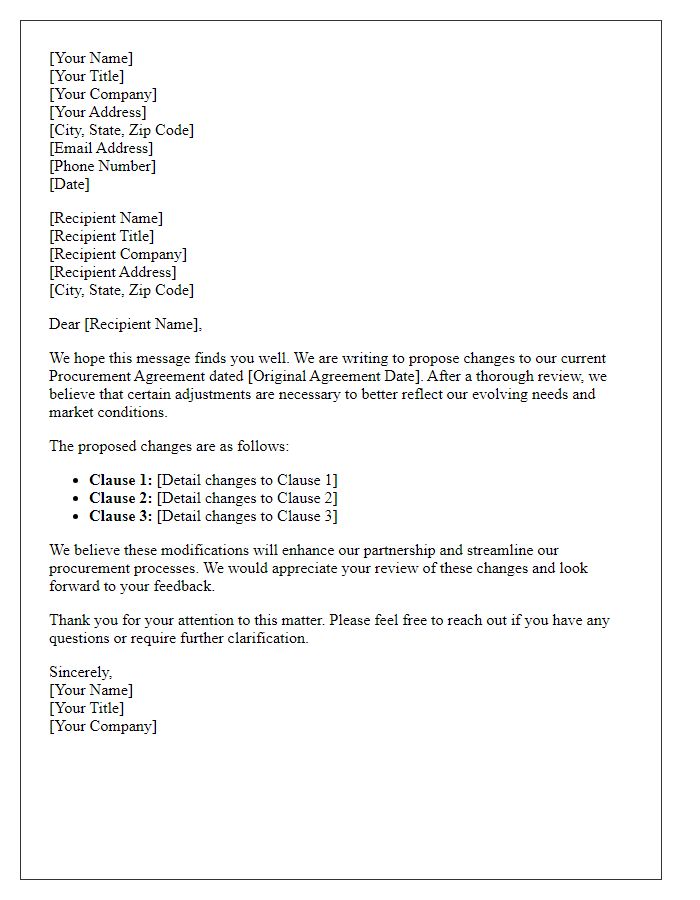
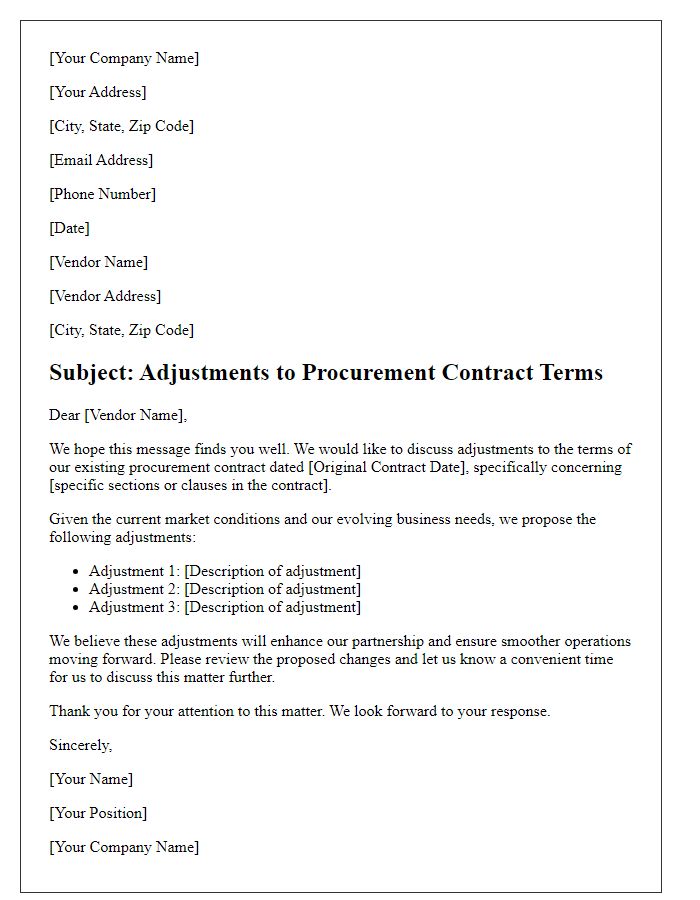
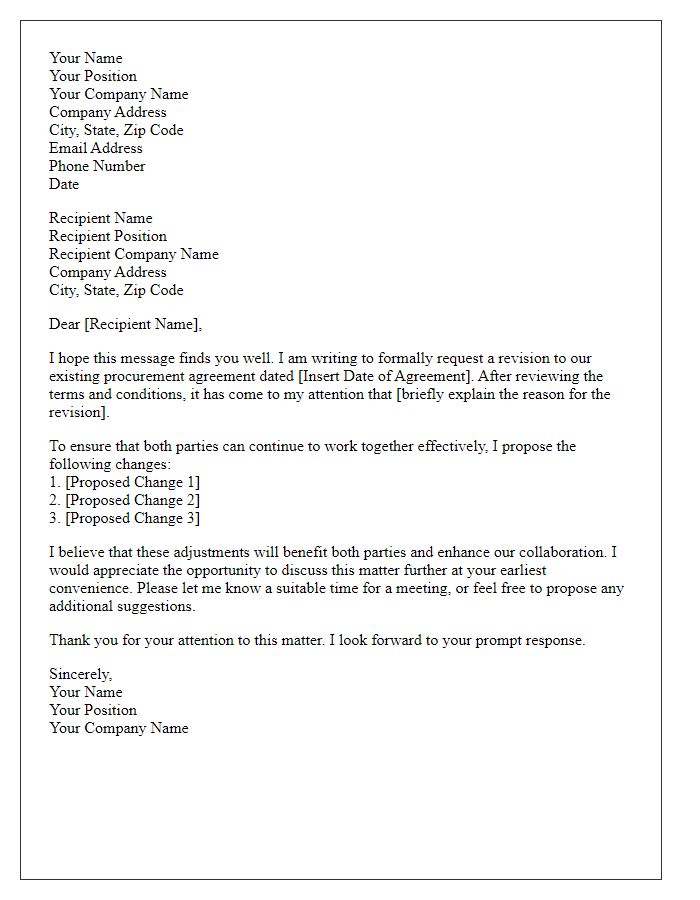
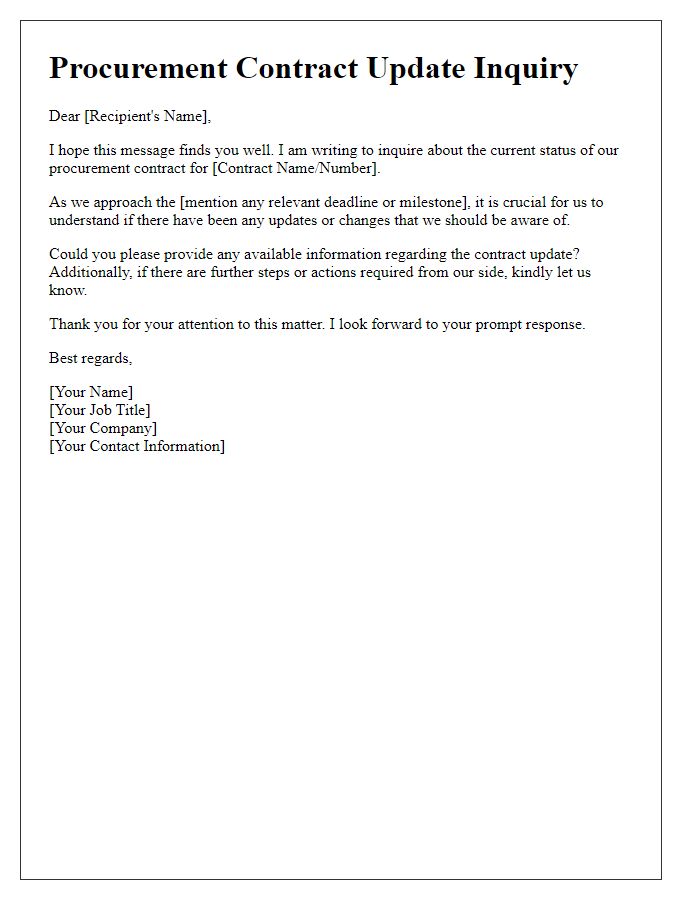
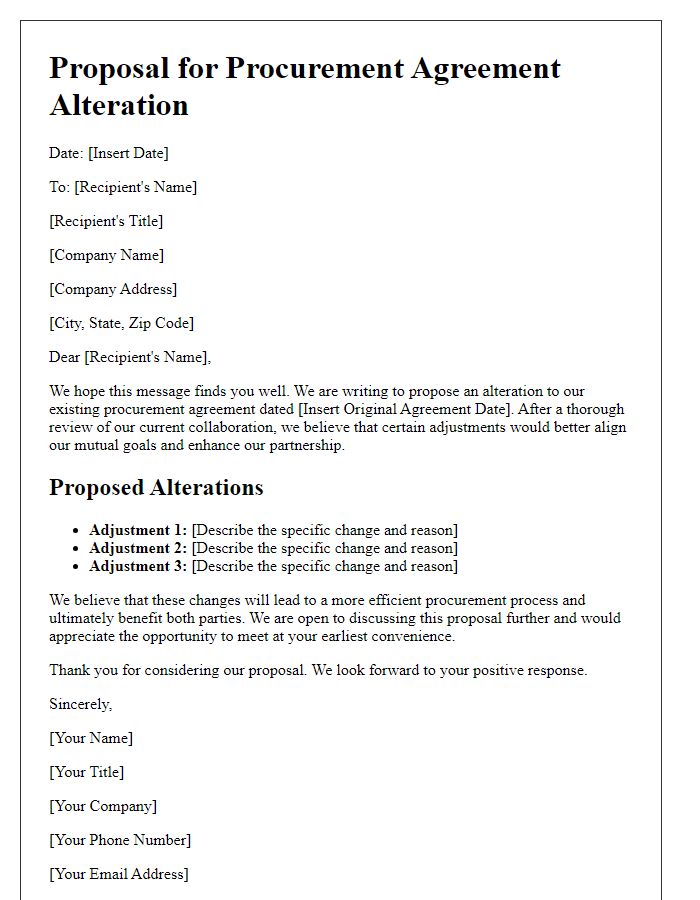
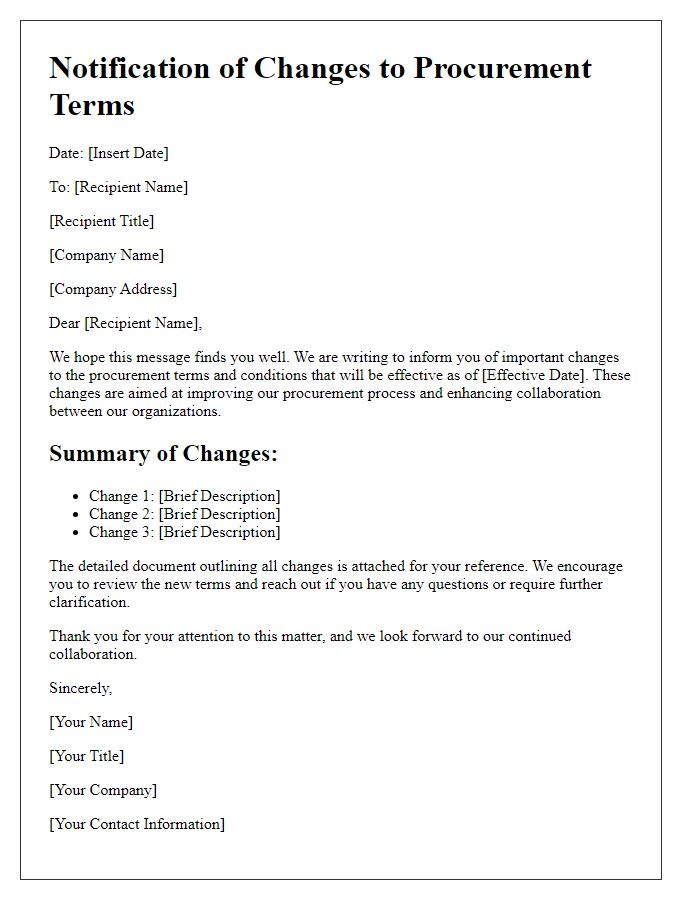
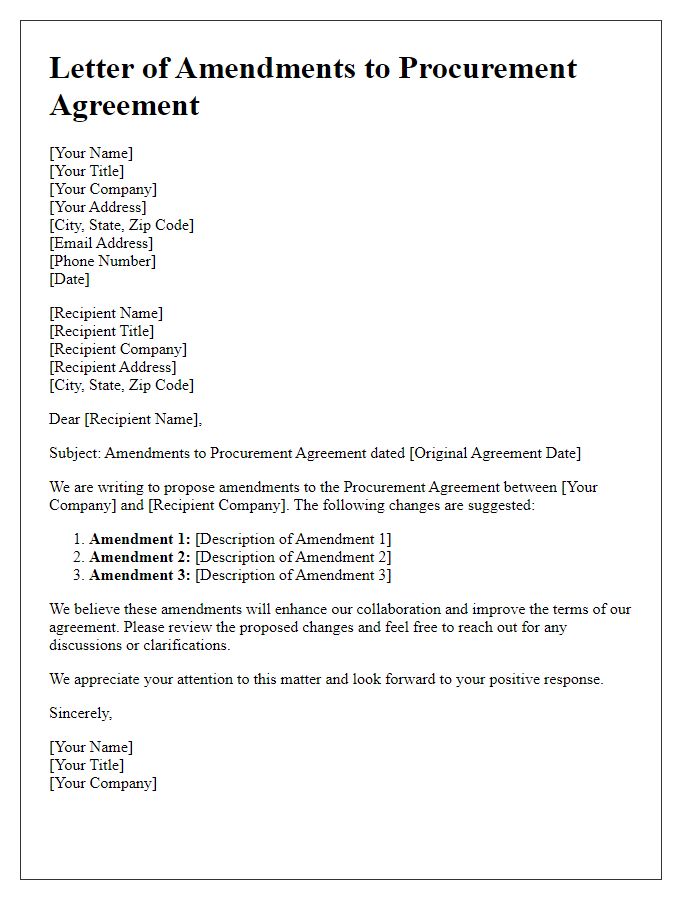
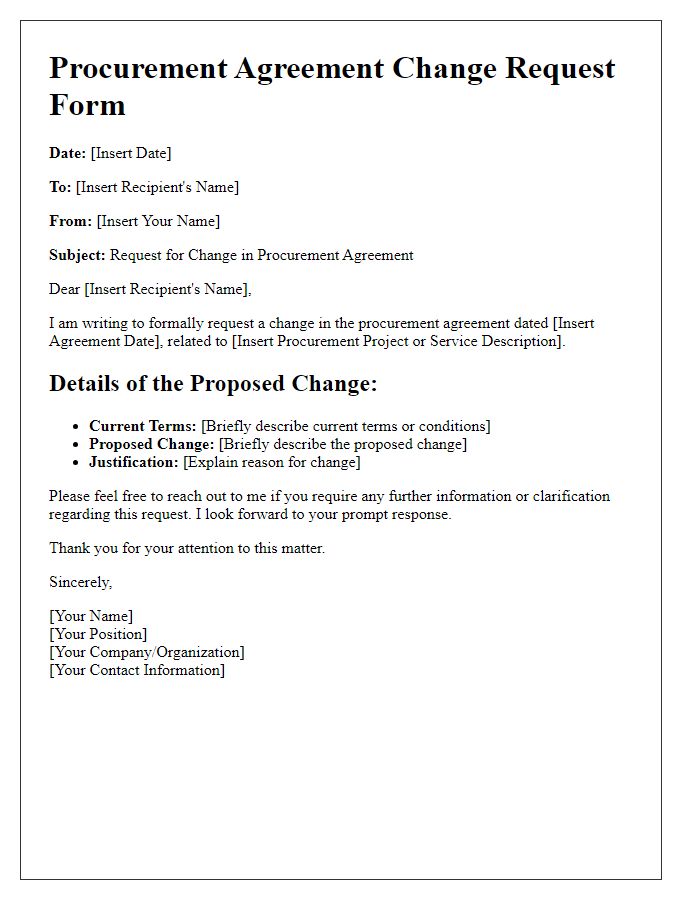


Comments